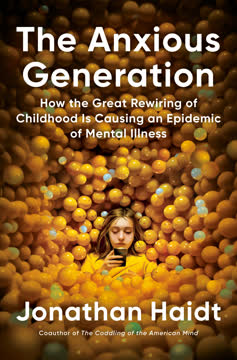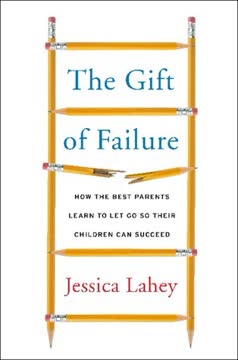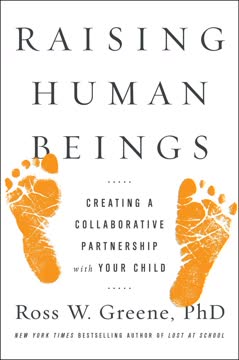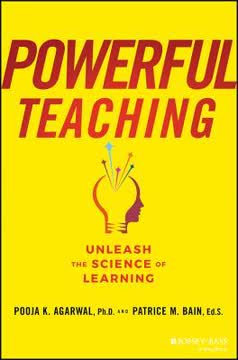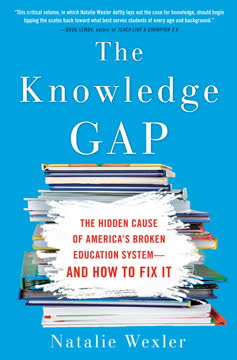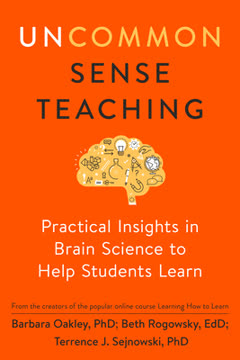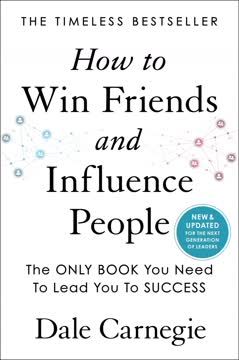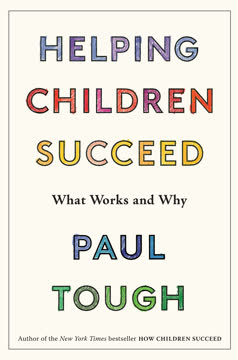Key Takeaways
1. The Hidden Crisis: Adversity's Impact on Development
Helping poor kids succeed is now, by definition, the central mission of American public schools and, by extension, a central responsibility of the American public.
Widespread struggle. Over half of U.S. public school students are low-income, yet the achievement gap between them and wealthier peers has not shrunk in decades, and the SAT gap has actually widened. This educational disparity is a national failure, with severe long-term consequences for economic mobility. The challenge is no longer a side issue but the core mission of American education.
Conceptual obstacle. Understanding why poverty leads to poor outcomes is the first hurdle. Beyond basic health and cognitive stimulation, neuroscientists and psychologists point to stress as the primary mechanism. Harsh or unstable environments create unhealthy, sustained stress levels in children, profoundly impacting their development.
Toxic stress effects. Chronic early stress, or "toxic stress," disrupts brain development, particularly the prefrontal cortex, which controls complex intellectual functions and emotional regulation. This impairment hinders executive functions like working memory, self-regulation, and cognitive flexibility, making it difficult for children to process information, manage emotions, and succeed in school.
2. Beyond Academics: The Power of Noncognitive Skills
Many people, myself included, now believe that they are critical tools for improving outcomes for low-income children.
Overlooked qualities. Traditional education focuses on cognitive skills like reading and math, but a growing body of research highlights the crucial role of "noncognitive" or "soft" skills. These character strengths—such as perseverance, conscientiousness, self-control, and optimism—are increasingly recognized as vital for success, especially for children facing adversity.
Long-term impact. Longitudinal studies, like the Dunedin study in New Zealand, show that children with strong noncognitive capacities achieve more education, better health, and greater stability in adulthood. They are less likely to be single parents, have credit problems, or face incarceration, demonstrating the profound, lasting benefits of these qualities.
Frustration persists. Despite widespread acknowledgment of their importance, educators often struggle with how to develop these skills. The demand for curricula or teaching strategies for "grit" is high, yet many effective educators foster these qualities without explicitly naming or "teaching" them, suggesting a deeper, environmental influence.
3. Environment, Not Instruction, Shapes Character
If we want to improve a child’s grit or resilience or self-control, it turns out that the place to begin is not with the child himself. What we need to change first, it seems, is his environment.
Paradox of teaching. Many educators who successfully cultivate noncognitive abilities in students, like chess instructor Elizabeth Spiegel or mentor Lanita Reed, rarely use terms like "grit" or "character." Instead, their methods involve intense analysis of mistakes or empathetic, firm guidance, which implicitly builds resilience and self-control. This suggests that character isn't taught like math.
Beyond traditional skills. Noncognitive capacities are fundamentally different from cognitive skills. They are not primarily the result of direct training or practice, and pedagogical techniques effective for academics (lectures, worksheets) often fail to develop them. Curiosity isn't learned from worksheets, nor perseverance from lectures.
Environmental products. These capacities are more accurately viewed as products of a child's environment. Strong evidence indicates that adverse environments profoundly affect early development, and even in later schooling, a child's noncognitive strengths largely reflect their surroundings, including the school climate. Therefore, transforming the environment is the most effective lever for change.
4. Parents as Architects of Resilience
for most children, the environmental factors that matter most have less to do with the buildings they live in than with the relationships they experience—the way the adults in their lives interact with them, especially in times of stress.
Relationships are paramount. While physical environment matters, research increasingly shows that the most crucial environmental factors for child development are the relationships children experience, particularly with their parents. These interactions, especially during stressful moments, profoundly shape emotional, psychological, and cognitive capacities.
Serve and return. Infants learn to make sense of the world through "serve and return" interactions: a baby's sound or gaze is met with a parent's responsive gesture, facial expression, or speech. These seemingly simple exchanges are vital, triggering the development of neural connections in the brain that control emotion, cognition, language, and memory.
Stress regulation and genes. Parents also act as external regulators of their children's stress. Consistent, sensitive responses to a child's distress help them develop internal coping mechanisms. This caregiving, especially in moments of stress, even affects gene expression through methylation, demonstrating how deeply parental attention can nurture a child's development, down to their genetic code.
5. Targeted Early Interventions Transform Lives
The capacities that develop in the earliest years may be harder to measure on tests of kindergarten readiness than abilities like number and letter recognition, but they are precisely the skills, closely related to executive functions, that researchers have recently determined to be so valuable in kindergarten and beyond.
Critical early years. The period before age six, especially the first three years, is a unique window of opportunity and vulnerability for brain development. Children's brains are most malleable, highly sensitive to environmental cues, forming the neurological infrastructure for all future capacities, both intellectual and emotional.
Beyond pre-K. The U.S. underfunds early-early childhood (0-3 years), focusing instead on academic pre-K for 4-year-olds. However, executive functions and noncognitive abilities are primarily formed through daily interactions and relationships, not deliberate academic practice. This creates a policy dilemma: how to support parental behavior without intrusive government intervention.
Promising models. Interventions like the Jamaica experiment (parent play), Attachment and Biobehavioral Catch-up (ABC) home visits, and Filming Interactions to Nurture Development (FIND) demonstrate the power of enhancing parent-child relationships. These programs, by focusing on responsive caregiving and secure attachment, significantly improve children's cognitive ability, social-emotional development, and stress regulation, even for children in foster care.
6. Rethinking Discipline: From Punishment to Support
But it does explain why harsh punishments so often prove ineffective over the long term in motivating troubled young people to succeed.
Misinterpreting behavior. Many schools view struggling students' misbehavior as a lack of discipline or a "bad attitude," leading to punitive responses. However, neurobiological research reveals that such behavior often stems from a poorly regulated stress-response system, a consequence of early toxic stress that impairs self-regulation and impulse control.
Ineffective punishments. The "zero tolerance" approach, prevalent since the 1990s, relies on increasing the cost of misbehavior through suspensions. Yet, this only works if behavior is a rational cost-benefit analysis. For students with impaired self-regulation, suspensions are ineffective, making academic struggles more likely and increasing stress for all students in the classroom.
Focus on environment. Instead of punishment, discipline programs should create classroom environments where students can develop self-regulatory capacities. This means de-escalating conflicts, fostering calm and consistent experiences, and recognizing that defiance can be a symptom of a child's inability to manage strong emotions, rather than just a willful act.
7. Motivation Beyond Rewards: Autonomy, Competence, Relatedness
The impact of financial incentives on student achievement is statistically 0 in each city.
Incentives fall short. The behaviorist approach, which assumes humans respond primarily to rewards and punishments, dominates American education. However, extensive experiments by economist Roland Fryer, involving millions of dollars in incentives for students, parents, and teachers, consistently showed no significant impact on student achievement, attendance, or graduation rates.
Intrinsic drivers. Psychologists Edward Deci and Richard Ryan's self-determination theory posits that intrinsic motivation—the inherent enjoyment and meaning derived from actions—is far more powerful. They identified three core human needs: competence, autonomy, and relatedness. When these needs are met, motivation is sustained; when external rewards are introduced, intrinsic motivation can actually decrease.
Counterproductive control. For disadvantaged students, who already face significant external pressures, schools often impose more control, further eroding their fragile sense of autonomy and competence. This cycle of disengagement cannot be broken by material incentives or punishments. Instead, fostering environments that promote choice, achievable challenges, and positive connections with teachers is crucial for deep, long-term motivation.
8. Measuring What Matters: Beyond Test Scores
A high school student’s GPA, researchers have found, is a better predictor of her likelihood to graduate from college than her scores on standardized tests like the SAT and ACT.
Limitations of tests. Standardized test scores, while relevant, are insufficient predictors of long-term academic success, such as college graduation. A student's GPA, which reflects noncognitive behaviors and mindsets alongside cognitive ability, proves to be a more reliable indicator, highlighting the importance of qualities beyond rote knowledge.
New assessment approaches. The push for accountability has led to efforts to measure noncognitive skills, but self-reports are subjective and prone to manipulation if tied to high stakes. Economist Kirabo Jackson's innovative research used administrative data—attendance, suspensions, grade progression, and GPA—as a proxy for noncognitive ability, revealing its strong predictive power for college attendance, adult wages, and future arrests.
Valuing overlooked teachers. Jackson's study found that some teachers consistently boosted students' noncognitive measures, even if they didn't significantly raise test scores. These teachers, often unrecognized by current accountability systems, were doing more to prepare students for life success. This suggests that noncognitive "skills" are less about discrete abilities and more about positive behaviors fostered by a supportive classroom climate.
9. The Power of Messages: Cultivating Academic Mindsets
I’m giving you these comments because I have very high expectations and I know that you can reach them.
Mindsets matter. Students' academic mindsets—their attitudes and self-perceptions—are crucial for perseverance. Camille Farrington's research identifies four key beliefs: belonging, ability grows with effort, I can succeed, and the work has value. For students from adverse backgrounds, neurobiological effects and past negative experiences often undermine these beliefs, triggering fight-or-flight responses in school.
Wise interventions. David Yeager, Claude Steele, and Carol Dweck's work on stereotype threat and growth mindset shows how subtle messages can be transformative. Claude Steele's "wise intervention" demonstrated that a simple Post-it note conveying high expectations and belief in a student's ability could dramatically increase revision rates and essay quality among vulnerable students.
Disarming threats. This "high expectations" message effectively switches off the students' internal "fight-or-flight" alarm, reframing criticism not as a personal attack or bias, but as a vote of confidence. Teachers have a powerful opportunity to build trust and belonging by changing their communication, creating a mental space where students feel safe to engage and believe in their potential.
10. Relationships and Rigor: The Dual Pillars of Effective Schools
In order for a student to truly feel motivated by and about school, he also has to perceive that he is doing important work—work that is challenging, rigorous, and deep.
Beyond belonging. While a sense of belonging and supportive relationships are fundamental for students, especially those from adverse backgrounds, they are not sufficient for deep motivation. Effective schools must also provide challenging, rigorous, and meaningful academic work that allows students to experience competence and autonomy.
Crew and connection. EL Education schools, like Polaris and WHEELS, exemplify this dual approach. Their "Crew" system fosters deep, multi-year relationships between students and teachers, creating a strong sense of belonging and trust. This supportive environment helps students overcome emotional barriers and engage more fully in their learning.
Character through challenge. EL's pedagogical practices emphasize engaging, interactive, project-based learning, peer critique, and student-led conferences. Students are compelled to take risks, persevere through complex tasks, and revise their work repeatedly. This experience of meeting and overcoming academic challenges, rather than direct instruction, is how character, resilience, and a growth mindset are truly built.
11. Deeper Learning for All: Challenging the Status Quo
Deeper learning has historically been the province of the advantaged—those who could afford to send their children to the best private schools and to live in the most desirable school districts.
21st-century demands. The "deeper learning" movement advocates for student-centered, inquiry-based, and project-based instruction to equip students with 21st-century skills like teamwork, critical thinking, and adaptability. These skills are crucial for a modern economy that no longer primarily needs industrial workers performing repetitive tasks.
Inequity in access. Historically, deeper learning has been largely inaccessible to low-income and minority students, often reserved for affluent schools. Skeptics worry about its effectiveness for disadvantaged students who may lack foundational knowledge or have experienced past "project-based learning" as mere distractions. This perpetuates a two-tiered educational system.
Proven benefits. However, growing evidence from EL Education schools, Envision Schools, and the American Institutes for Research demonstrates that well-implemented deeper learning methods significantly benefit low-income students, improving both content knowledge and noncognitive capacities. Even "no-excuses" charter networks like Achievement First are now embracing these principles, recognizing that student autonomy and engagement are vital for motivation and success.
Last updated:
Review Summary
Helping Children Succeed receives mixed reviews, with praise for its insights on education and child development but criticism for lack of concrete strategies. Readers appreciate the focus on creating supportive environments and building relationships to foster success. Some find it repetitive of Tough's previous work or too surface-level. Educators value the research-backed ideas but desire more actionable advice. Overall, it's seen as thought-provoking for those interested in improving outcomes for disadvantaged children, though opinions vary on its practicality.
Similar Books

